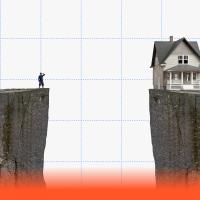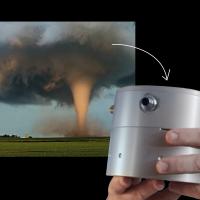Times Square is known as the Center of the Universe or the Crossroads of the World — so why was it designed not for people, but for cars?
“How come people are accepting to be [crowded] on a tiny sidewalk, in this iconic space in this iconic city, which is supposed to be top-notch in so many ways?” Ewa Westermark asks.
The partner and director of Gehl Architects, Westermark is an architect who doesn’t specialize in buildings. Instead, she specializes in the spaces between buildings, like streets and courtyards.
In 2001, Westermark and Gehl were brought in to help the New York Department of Transportation make Times Square more people-friendly.
When the architects examined the space, they found that only 10% of it was geared towards people; namely, the sidewalks. The other 90% was given over to cars. But the users of the space were the exact opposite: 90% of the users were pedestrians.
The architects began by trying out a temporary solution. They painted pedestrian spaces and bike lanes on the roads, and placed planters, chairs, umbrellas, and other people-friendly objects in their newly-claimed space.
“All the spaces were temporary, they could, within 48 hours, be removed.”
Ewa Westermark
But if you’ve been to Times Square since the turn of the millennium, you know that they weren’t removed; come to find out, people enjoy having space in the city for, well, people. Now, tourists wander in the advertisement’s glow and skaters shred the most iconic intersection in America, a test case for taking back public space.
“It’s like a full scale experiment that turned out to be a really, really good experiment,” Westermark says.
“And people wanted it.”
Cities Aren’t Made for People
It’s called “dead metal.” And while it sounds cool as hell, the problems it causes aren’t: dead metal is all of the parked cars chewing up half of a city’s space. Bikes, people, pets, strollers? They get jammed into the spaces between dead metal and buildings — sidewalks.
It’s the most massive privatization of public spaces since the Middle Ages, Blaine Merker, director and head of climate action at Gehl, says, and it’s happened right before our eyes. In most cities, 80% of roads are given over to vehicles, and when people walk, jog, or ride into that space, accidents happen.
“If you want to invite more people walking and cycling, give them more space.”
Ewa Westermark
The rise of the private automobile in American life and culture has dramatically changed how cities were designed, John Frazer, a mobility futurist, wrote for Forbes. Emerging from World War II, automakers became economic powerhouses, employing workers who suddenly could afford their own cars — rumbling manifestations of the freedom of the American Dream.
Cities were designed around that dream. Frazer quotes University of Houston historian Martin Melosi, who said that roughly half of the space in American cities has been given over to roads, parking lots, parking spots, gas stations, traffic signals, and other things pertaining to cars. And at the same time, space for other forms of transportation — like sidewalks — were squeezed out.
Even the sidewalks themselves are designed to resist change; large concrete slabs, they don’t lend themselves to being modified or moved around. Making an infrastructure change can cost millions, a price many cities won’t or can’t pay.
But maybe we can take those spaces back; they are public spaces, after all. “Who gets to build our cities?” Merker asks.
User-generated Urbanism
“We thought, ‘there’s a possibility here to do something really provocative, actually,” Merker says, “that could challenge the idea even of what you do with public space.”
Merker and his colleagues realized that as long as they paid the meter, they could do whatever they wanted in a parking space. What they did was create a tiny park — a parklet.
Parklets are the basis of Parkin(ing) Day, where people around the world throw up ad hoc public spaces to both highlight, and push against, the dead metal filling the streets. It’s an example of user-generated urbanism, where the people who are occupying spaces play a larger role in designing them.
In user-generated urbanism, “the role of a designer is shifting from one who delivers the design products or services to one who’s more creating a platform, in some cases, for participation,” Park(ing) Day founder John Bela said in a 2013 interview.
For Bela, user-generated urbanism means that both designers and the people who will use them work together to create better spaces designed for those who will actually be living in them.
Putting the needs of a space’s users first may look something like Copenhagen. Denmark’s capital features broader bike lanes and sidewalks, and built-in places for amenities like sidewalk cafes — the kind of pedestrian friendly places the pandemic has pushed the world into.
It’s the purposeful creation of spaces where people can meet and mingle that has led to Westermark’s favorite moments of living in the city.
“I think cities are this beautiful, social jewel, if they work well.”


